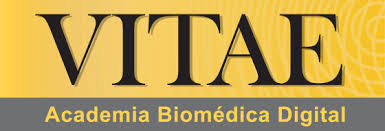Aeromicobiota de la biblioteca de la escuela de Bioanálisis “Prof. José M. Forero”, Universidad Central de Venezuela
Palabras clave:
Hongos anemófilos, flora fúngica, temperatura, humedad relativas, bibliotecas, UCV, Venezuela, Anemophile fungi, fungal flora, temperature, relative humidity, librariesResumen
Evaluar la aeromicobiota en bibliotecas permitiría conocer la calidad y cantidad de los agentes fúngicos allí presentes e igualmente aportaría datos para la estandarización de los rangos permitidos para espacios internos. El objetivo del presente trabajo fue evaluar la aeromicobiota de la biblioteca de la Escuela de Bioanálisis-UCV en dos turnos. El área se delimitó en dos ambientes, externo (P) e interno, éste constituido por la sala de lectura (SL), archivo (A) y dirección (D). Las muestras se recolectaron usando un método de impactación y se registró la temperatura (T) y la humedad relativa (HR) en cada ambiente y turno. Se utilizó agar papa dextrosa. Las muestras se incubaron a 28°C durante 48-72 horas, se contaron las colonias y se determinó las UFC/m3 para realizar la identificación fúngica según métodos micológicos convencionales. En el ambiente interno, la T osciló entre 23,4-27,7ºC y la HR entre 59-61% en ambos turnos; el contaje total de colonias en la am fue de 116 (580 UFC/m3) y en la pm, 56 (280 UFC/m3). Los hongos predominantes en la am fueron Aspergillus spp., Cladosporium spp. y Chaetomium spp., y en la pm, Chetomium spp., Curvularia spp. y Aspergillus spp. En P, la T fue de 25,5-27,7ºC y la HR de 58-61% en ambos turnos; el número de colonias en la am fue de 48 (240 UFC/m3) con predominio de Aspergillus spp., Penicillium spp. y Cladosporium spp. En la pm se contabilizaron 20 colonias (100 UFC/m3) y prevalecieron Basidiomycetes, Aspergillus spp., Cladosporium spp. La evaluación de la aeromicobiota de la biblioteca de la escuela de Bioanálisis-UCV reveló que los valores de T y HR en ambos turnos en todos los ambientes son propicios para la proliferación de hongos anemófilos, que existe diversidad fúngica y que el área del archivo se encuentra contaminado por hongos anemófilos.
Abstract
To evaluate the aeromicobiota in libraries would allow knowing the quality and quantity of the fungal agents and it would also provide data for further standardization of ranges for internal areas. The main objective of this study was to estimate the aeromicobiota of the Bioanálisis School library, during two turns. The area was divided in two, the external (P) and the internal, this one constituted by lecture room (SL), archive (A) and direction (D). Samples were taken by using an impactation method and temperature (T) and relative moist (HR) were recorded in each area and turn. Potato dextrose agar was used. Samples were incubated at 28°C for 48-72 hours; colonies were counting and CFU/m3 were determined and fungal identification was performed according to traditional mycological methods. In the internal area, in both turns, T oscillated between 23.4-27.7ºC and HR between 59-61%. The total amount of colonies was 116 (580 CFU/m3) in the morning and 56 (280 CFU/m3) in the afternoon. Aspergillus spp., Cladosporium spp. and Chaetomium spp. prevailed in the morning whereas Chaetomium spp., Curvularia spp. and Aspergillus spp. predominated in the afternoon. In P, T was between 25.5-27.7ºC with a HR between 58-61% in both turns; the amount of colonies in the morning was 48 (240 CFU/m3) where Aspergillus spp., Penicillium spp. and Cladosporium spp. predominated. In the afternoon, 20 colonies (100 UFC/m3) were counted and Basidiomycetes, Aspergillus spp., and Cladosporium spp. prevailed. The evaluation of the aeromicobiota of the Bioanálisis School library revealed that T and HR values in both turns and areas are propitious for anemophile fungi proliferation, also that a fungal diversity exists and that the archive is contaminated with anemophile fungi.

